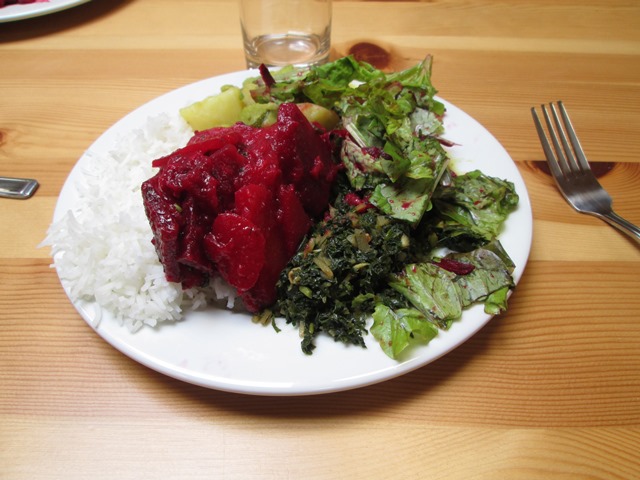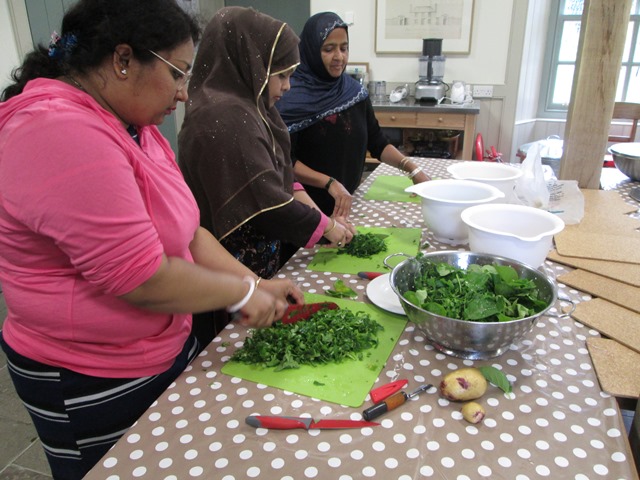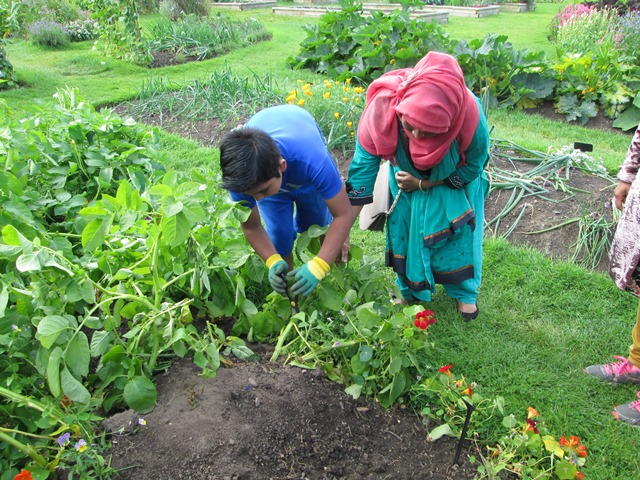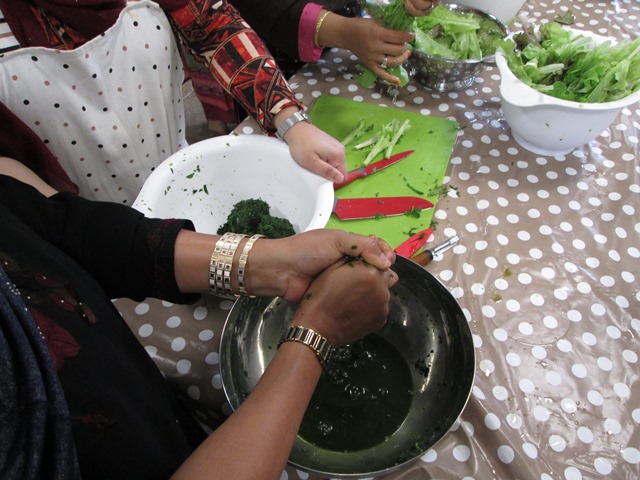Blog by Andy Crofts of the Big Picnic project
I think I am an adventurous eater but I’ve always understood that some plants are poisonous and that applies to some bits of even my favourite food plants. Potatoes are a delicious part of my regular diet, cooked in a variety of ways, but, until recently, I accepted the received wisdom that all the green bits are poisonous.
When I got a job here at the botanic garden working with community groups I enjoyed discussing different food traditions and crops, particularly with those from ethnic minorities. We harvested lots of crops together and cooked some of them. Often I was impressed by the care that was taken to use all of a crop by using parts that we in Scotland tend to throw away. It seemed that minimizing food waste was second nature.
One particularly interesting group was Nari Kallyan Shangho (NKS), a group focused on the welfare of South Asian women living in Edinburgh, who I found had fascinating food traditions. When we lifted potatoes together I was surprised that they suggested we could eat the leaves as well.
For two years I vetoed any idea that we would eat potato leaves. However, last year I found myself a bit more receptive when a group from NKS offered to show how potato leaves were cooked.
This change of heart was partly due to some other edible plant trials we were working on with scientists here at the Garden. The plants in question are close potato relatives in the same genus Solanum. They are known as African nightshades (another scary sounding name) or African superfoods as these traditional African vegetables are now known to be highly nutritious.
Health and safety are key considerations in my work, so I searched the Internet and always found the same information about potato leaves being poisonous. However, curiosity had got the better of me by now and colleagues suggested I consult Tiina Sarkinnen, an RBGE scientist working on Solanum species. I also asked Jan, one of our Edible Garden volunteers, who had been involved in the growing trial. Tiina thought it was likely that we could eat them, and Jan had an important insight that sometimes special processing is involved in making some foods safe to eat. The African staple, manioc / cassava needs to have cyanide washed out of it, for example.
So the day of the potato leaf dawned as part of one of our community cooking sessions with NKS at the Botanic Cottage (they harvest and cook from our garden produce, we eat and learn).
Jan was quite right. They had a method with those potato leaves – basically strip down to just the leaflets and peeled finer stems then chop finely, add salt, massage it in, squeeze out all the (bitter) juices and chuck them away.
Then cook the remaining squeezed leaves with no further liquid, add very finely chopped potato. Then combine with separately fried onion, garlic, ginger, onion seed and fenugreek. It was very nice. I found myself still alive and feeling well fed for the rest of the day.

The finished curry looked amazing, and tasted really good. Potato leaves are the darker green in the foreground.
So what did I conclude?
- There is a lot of traditional knowledge out there
- Some of our own science-based knowledge may not be completely right
- Don’t try this at home




